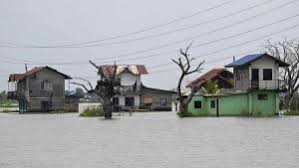UNEP Adaptation Gap Report 2025:

The UN Environment Programme (UNEP) released the Adaptation Gap Report 2025: “Running on Empty”, warning that the global finance gap for climate adaptation in developing countries has widened drastically.
- UNEP Adaptation Gap Report 2025 is an annual flagship publication of the United Nations Environment Programme (UNEP) that tracks global progress on climate adaptation planning, implementation, and finance, assessing how far the world is from achieving climate resilience goals.
- Published By: UNEP–Copenhagen Climate Centre with contributions from multiple global institutions and experts.
- Aim is to evaluate whether nations—especially developing ones—are adapting fast enough to climate impacts, and to quantify the adaptation finance gap to support global negotiations under the UNFCCC and COP30
Highlights:
- Developing countries require US$310–365 billion annually by 2035, while current adaptation finance stands at only US$26 billion (2023) — 12–14 times lower than the need.
- Adaptation finance declined from US$28 billion (2022), meaning the Glasgow Climate Pact target of doubling finance by 2025 will be missed.
- 58% of adaptation finance is loan-based, including non-concessional debt, deepening inequality for vulnerable countries.
- 172 countries have at least one national adaptation plan (NAP), but 36 are outdated, limiting real impact.
- Over 1,600 adaptation actions were reported globally, mostly in biodiversity, agriculture, water, and infrastructure, yet few measure tangible outcomes.
- The private sector contributes only ~US$5 billion, but could potentially invest up to US$50 billion annually with policy support.
- Baku–Belém Roadmap (2024): Envisions US$1.3 trillion per year by 2035 in total climate finance; calls for grants and non-debt instruments to prevent debt traps.
- The report stresses a “global collective effort (mutirão global)” led by Brazil’s presidency to align climate finance, transparency, and adaptation goals.




